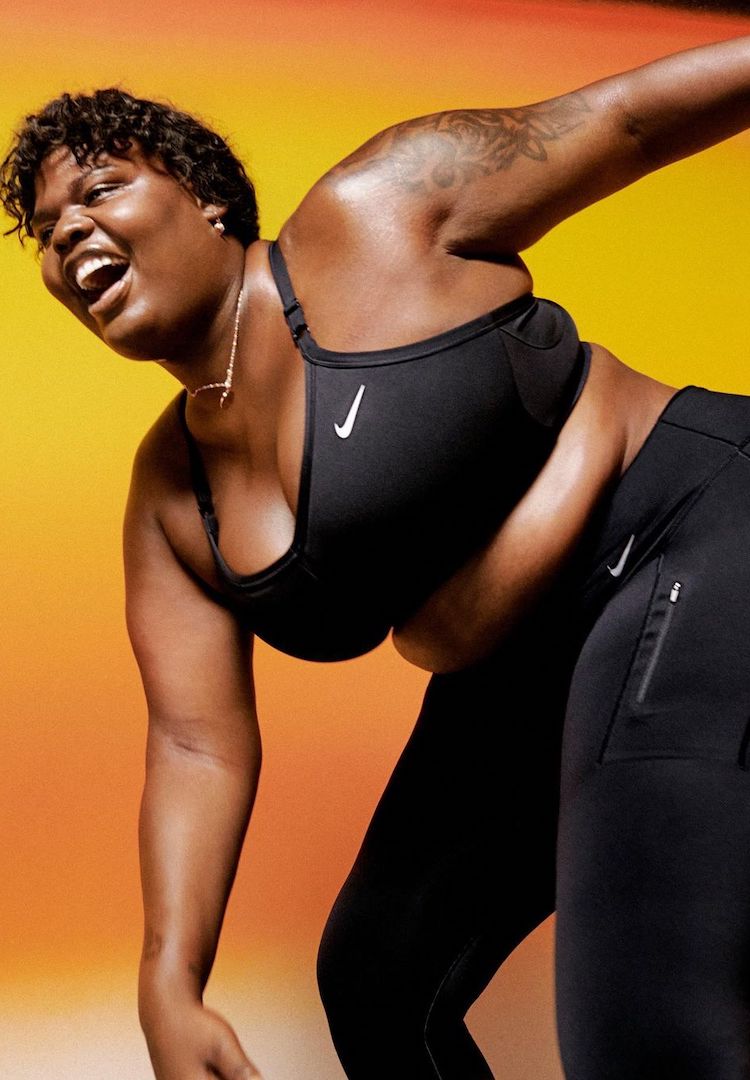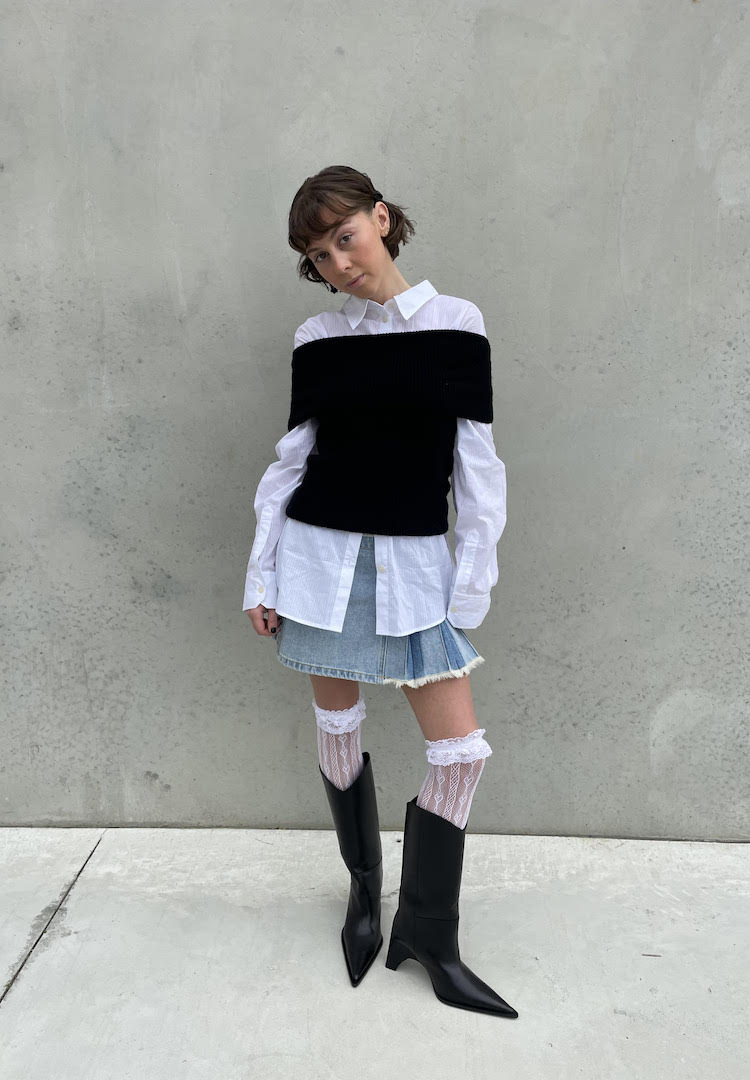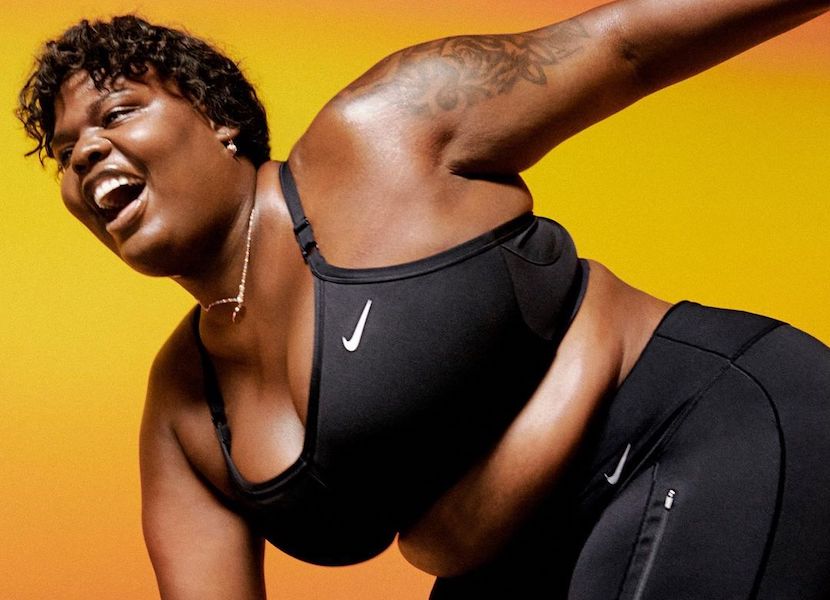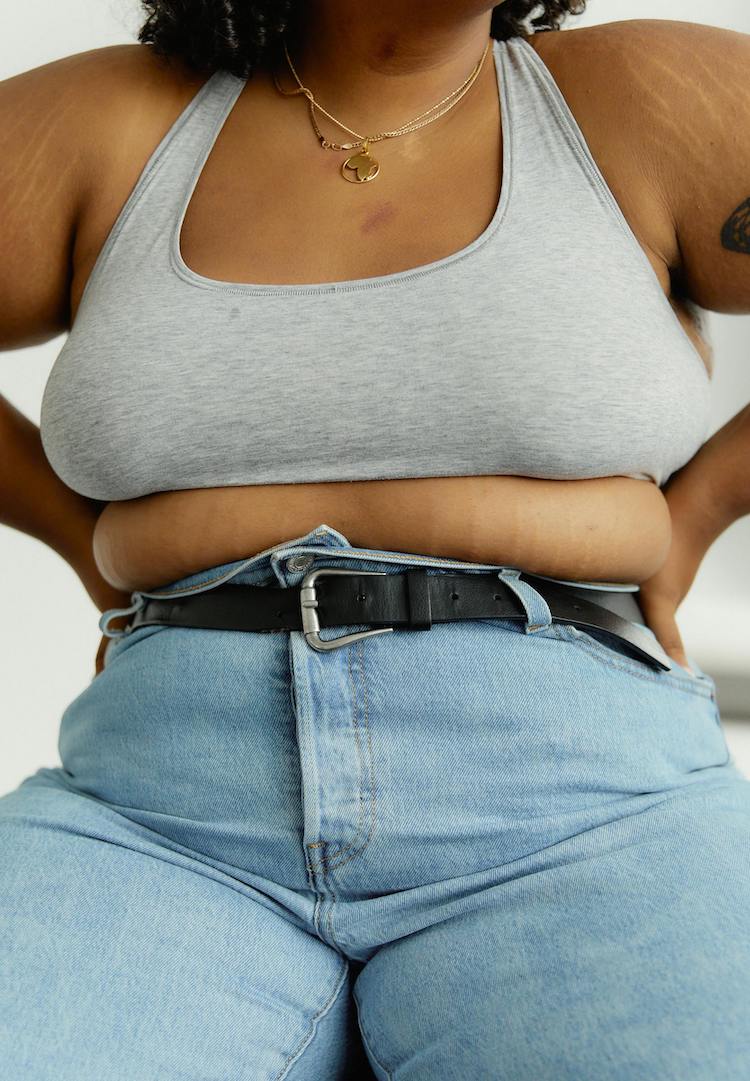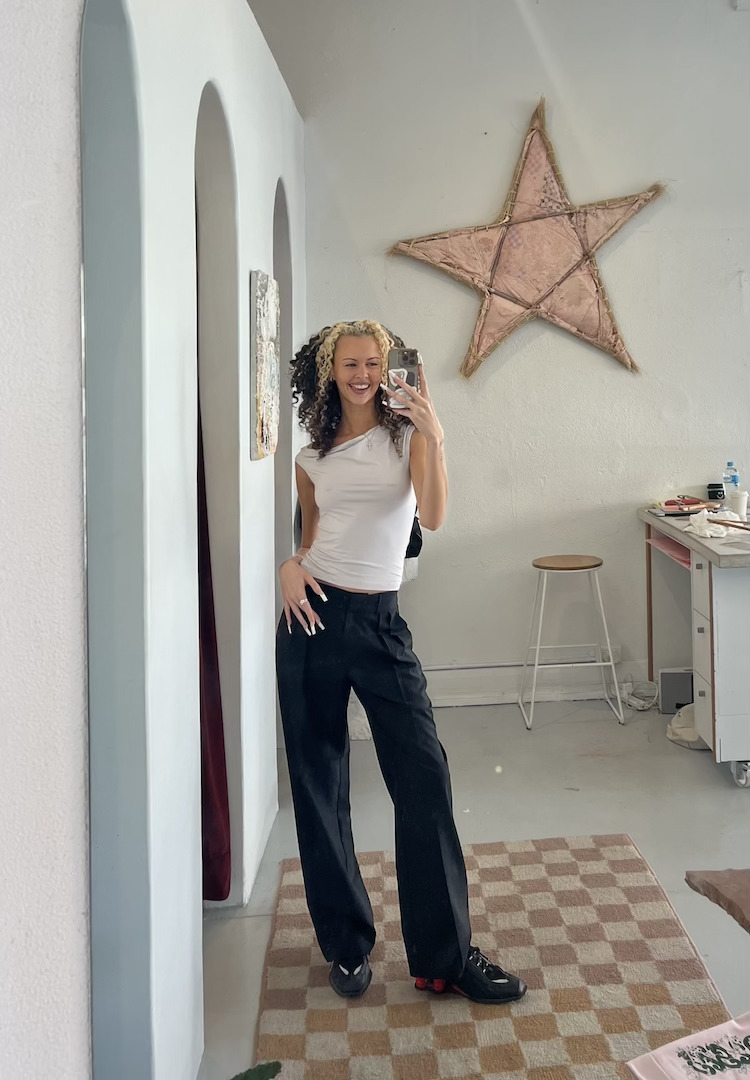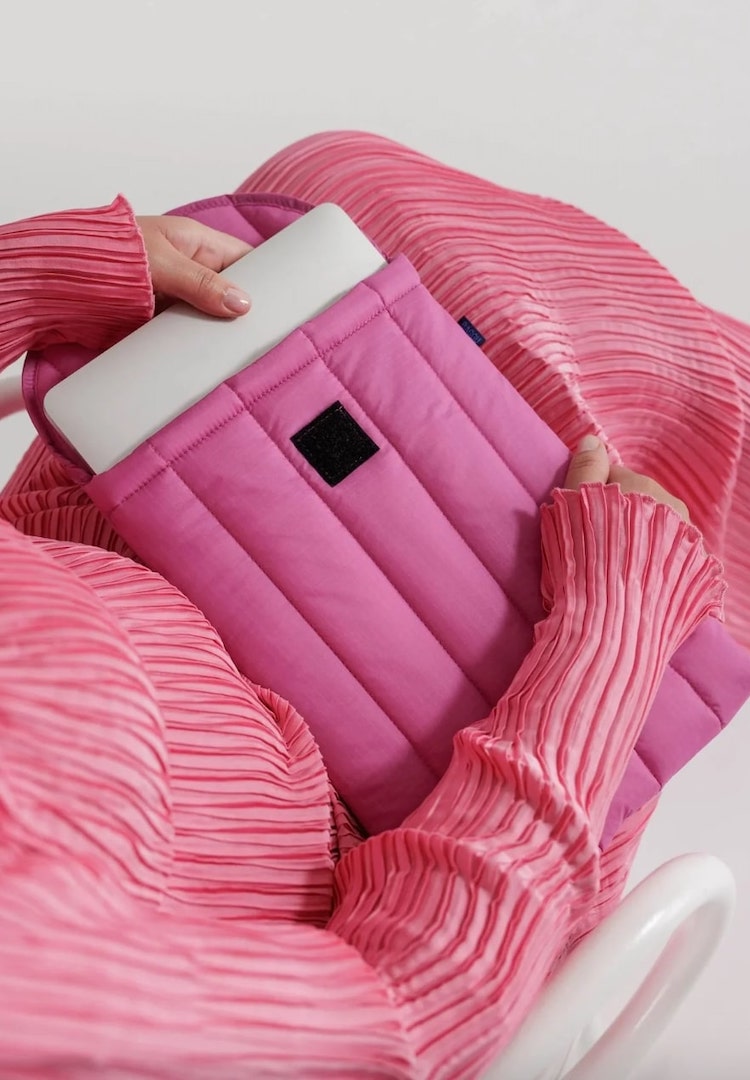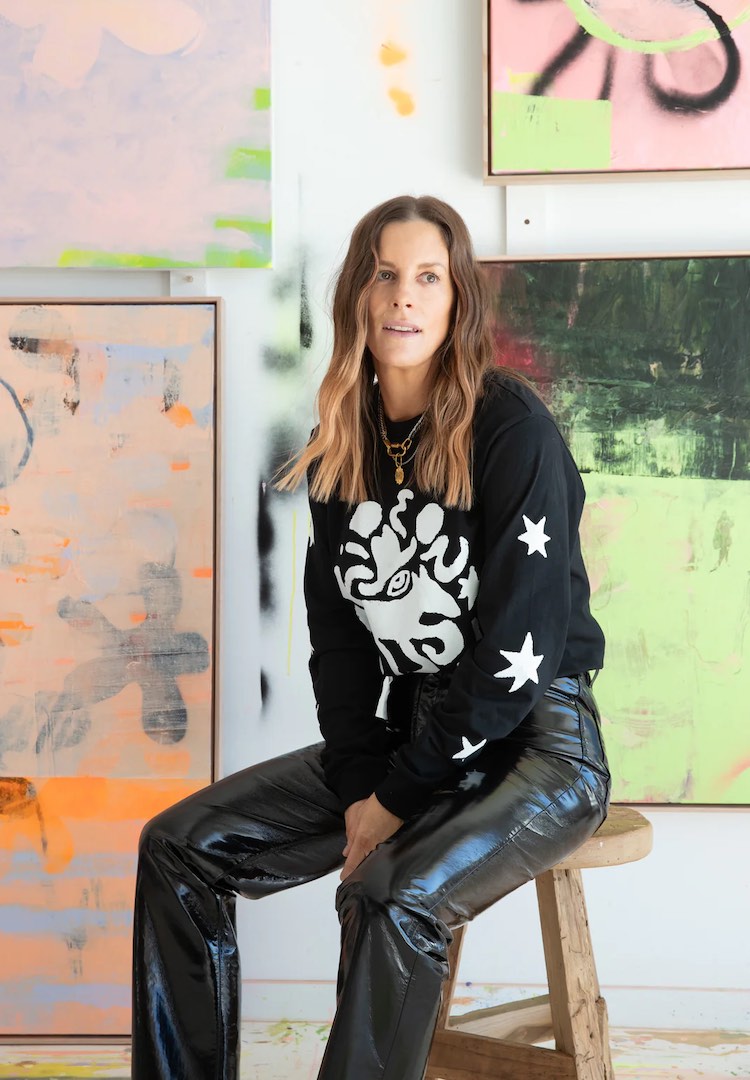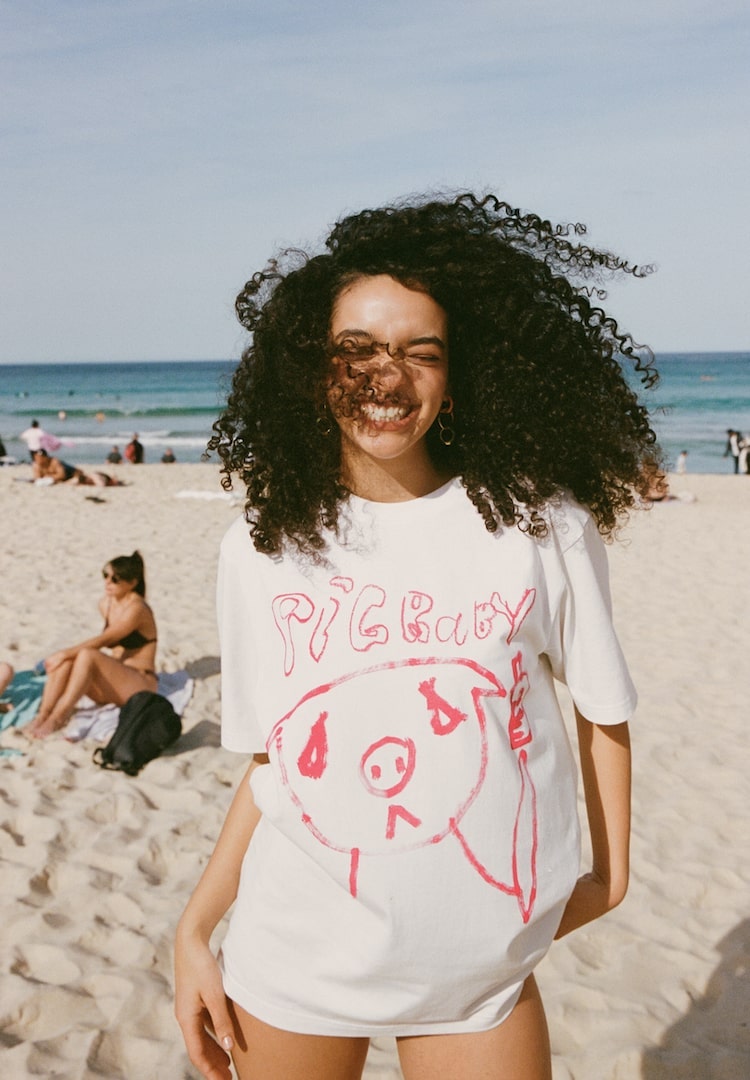What does inclusive design look like in the activewear space?
IMAGE VIA @NIKEWOMEN/INSTAGRAM
WORDS BY IZZY WIGHT
How Nike is creating activewear that helps, not hinders our workout sessions.
For female-presenting people, sport has been a historically difficult industry to navigate. We’ve been sidelined (metaphorically and literally), excluded and ignored; made to elbow our way into spaces men have been occupying as long as competitive sports have existed. In 2012, there were still 39 different sporting events that women weren’t allowed to compete in. In 2019, women’s teams competing in the World Cup were made to split only 7.5 per cent of the total winnings the men’s teams receive.
And you don’t have to be an elite athlete to understand what gender prejudice in sport feels like. It can also be subtle like condescending gym speak, being pedalled weight loss fixes instead of strength training exercises and on a very basic level, simply not being able to find a sports bra that actually fits. All of these factors (plus many more) are why it’s so important companies like Nike are taking steps to better serve female athletes at all levels and capabilities.
For more fashion news, shoots, articles and features, head to our Fashion section.
And whether you’re breaking records on the world stage or doing a yoga flow in your living room, performance is impacted by how you feel. An example is trying to run any distance while ill-equipped and on your period. When sore boobs are unsupported, each stride brings a new level of discomfort. Then there’s the cramping, bloating and leakage paranoia, which (depending on the day of your cycle) can mean performing an undies check every five minutes, which also looks a lot like picking a wedgie.
Put simply, what we need is activewear that helps, not hinders our workout sessions. Recently, Nike rolled out a range of new products for her*, with a focus on celebrating all kinds of movement and making activewear more inclusive for all. Read on for some of the standout innovations from the range.
A new era for the sports bra
“If we think about the science [of a sports bra], there’s really the three things we are interested in – fit, function, and feel,” explains Dr Bridget Munro, Women’s Research Director at Nike. “If we think about fit, we are trying to understand the shape of the body and the shape of the breast. The breast is formed by soft tissues, so it can be moulded a little bit… the breast [also has] volume, that’s what your cup size is, and then it has mass, so some people have heavier and lighter breast tissue.”
View this post on Instagram
When creating Nike’s newest sports bra edition, the Nike Swoosh Flyknit, Bridget and her team analysed over 70,000 body scans from women around the world. “The second thing is function,” Bridget says. “We have tried to obsess [over] how the breast tissue moves independently of the body, and we’ve really done that on anyone from XS size, all the way to XXXXL… and through that, we’ve built a library of different motion profiles we can use to design product.”
As Dr Bridget tells me, the Nike Swoosh Flyknit is “one of the most advanced pieces of apparel Nike has ever presented to the world”. It’s high-support, ultra-stretchy and features comfortable sweat-wicking technology. From personal experience, I can say it gives locked-in support without feeling suffocating. Plus, the low-profile hook-and-eye clasp means it’s easy to get on and off, even after your workout.
Period protection
“We know periods are a barrier to sport and movement for teens and adults not only physically, but also mentally and emotionally,” explains Lisa Gibson, Senior Product Manager for Innovation Apparel at Nike. As a former professional water polo athlete, she understands the importance of feeling comfortable and confident while moving – particularly during menstruation. The Nike One Leak Protection Short debuts the brand’s new “game-changing, ultra-thin, leak protection technology”.
View this post on Instagram
When conducting research for the new technology back in 2019, Lisa’s team delved into insights on teenage girls and sports. “From that, we learned that by age 14, girls are dropping out of sport at twice the rate of boys and by age 17, 51 per cent will have quit sport,” she explains. “We know periods aren’t the only reason for this drop-off, but it is what we consider a critical component of the dropout formula.”
The aim was to create a product that would keep people in sport. “… What we’re unlocking here is more than a product. This technology is game-changing and for trans, non-binary [and] gender non-conforming communities, this has the potential to be a mental health aid… for [these] communities, [periods can be] a highly traumatising experience that exacerbates those feelings of gender dysphoria. Their body is betraying their identity every single month. So this really, this technology has the power to make people feel safe and secure.”
Fit-first
When it comes to clothing, fit is extremely important. But when we’re speaking about activewear, it’s about fit as well as function; helping achieve the perfect balance of art and science. “There are the measurements that fit your body technically and then there’s fit preference,” explains Tania Flynn, Nike’s Vice President of Apparel Product Design. “So it’s about making sure we’re creating the product to fit your shapes, proportions and sizes, and there’s also the choice of how you’d like your garment to fit.”
View this post on Instagram
For example, Nike has just released two new styles of leggings: the Zenvy and the Go. Both are available in sizes four to 26, but provide different fit profiles. The Zenvy is uber-soft and slightly looser, while the Go leggings are firm, sleek and “snatched”. As Tania says, “We need to make sure we’re providing the right measurements and balance of proportions so she has options, and then preference comes into play”.
*Nike acknowledges gender is a spectrum, therefore when referencing ‘her’, everyone is invited into the space.
For more on inclusivity in sport, head here.


